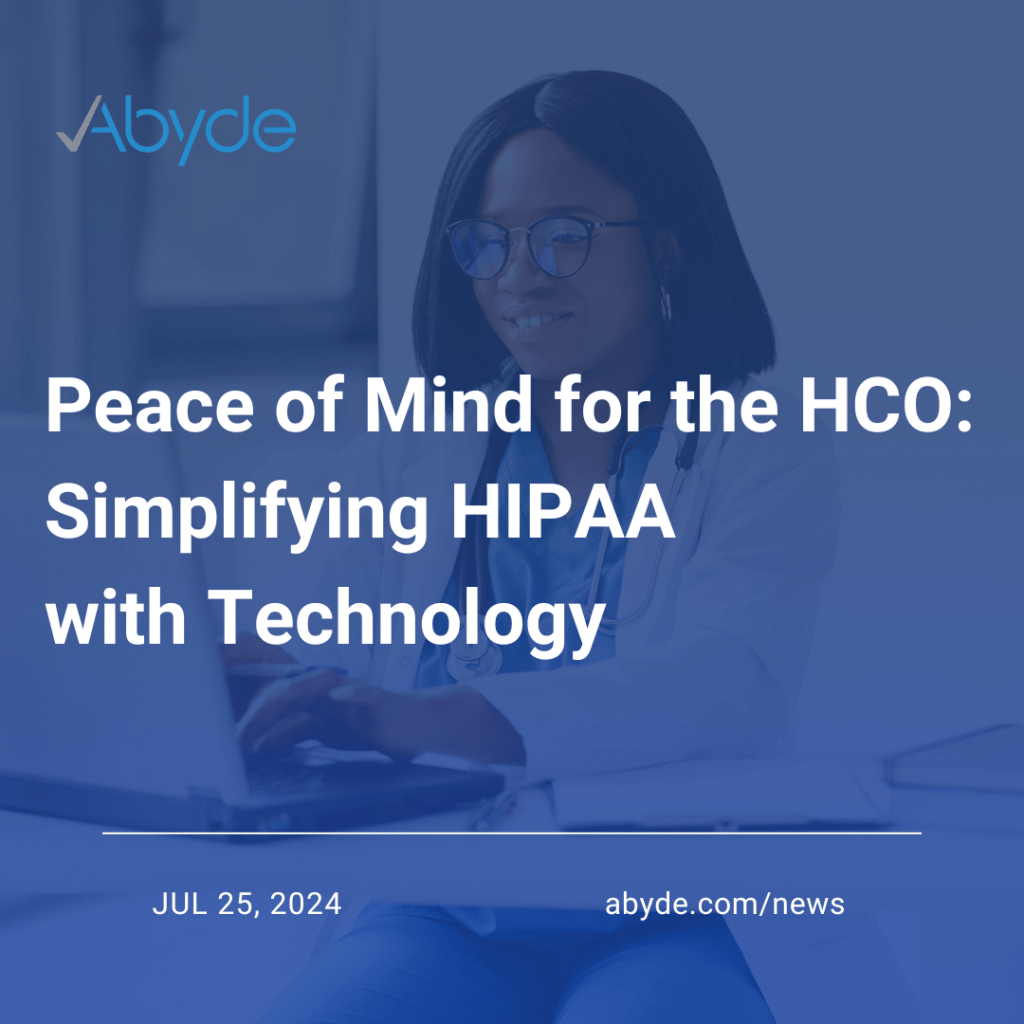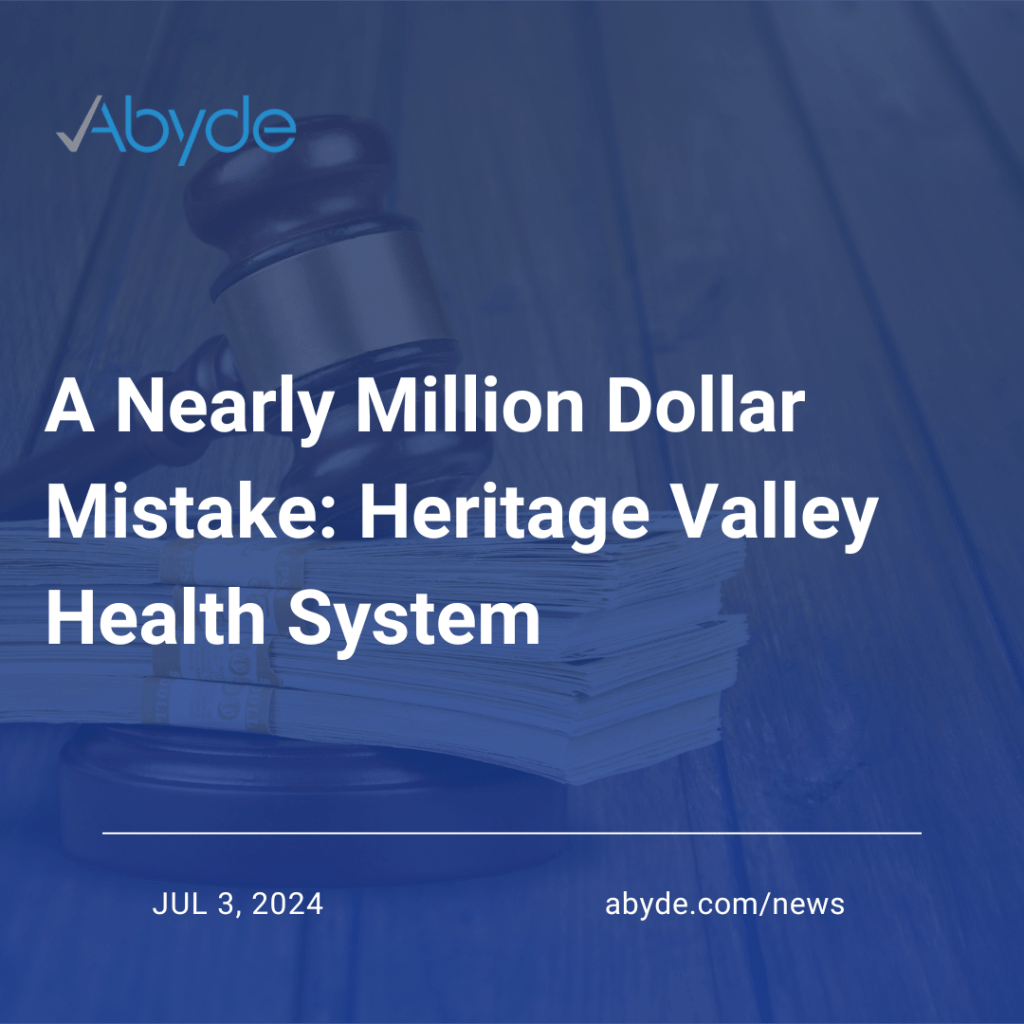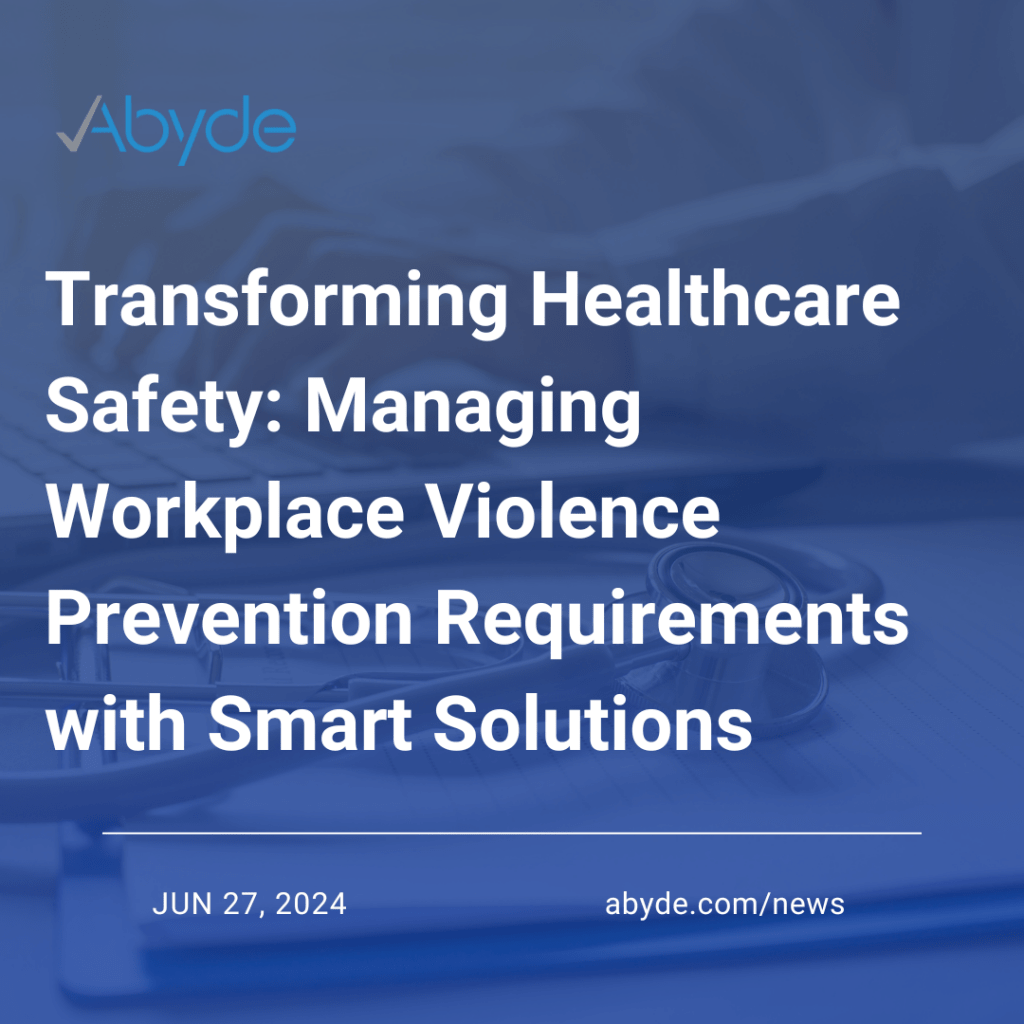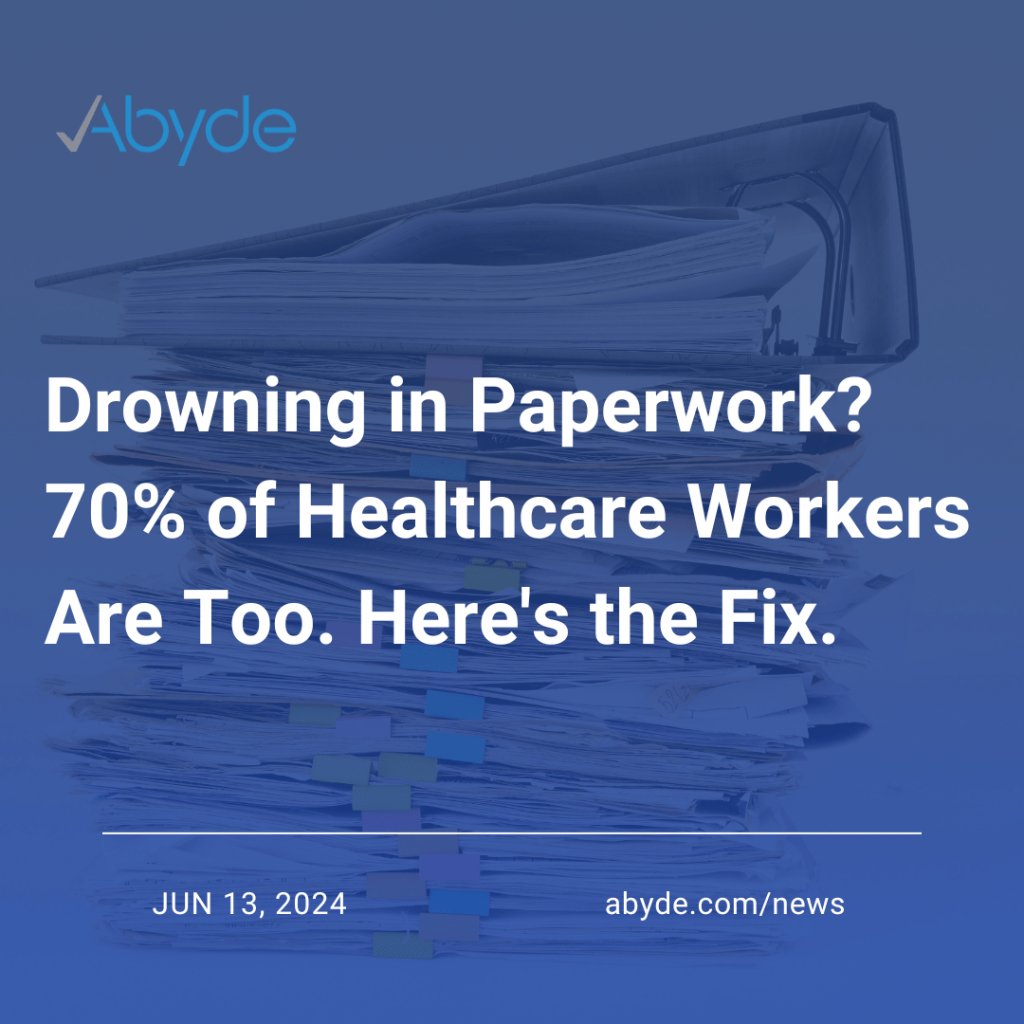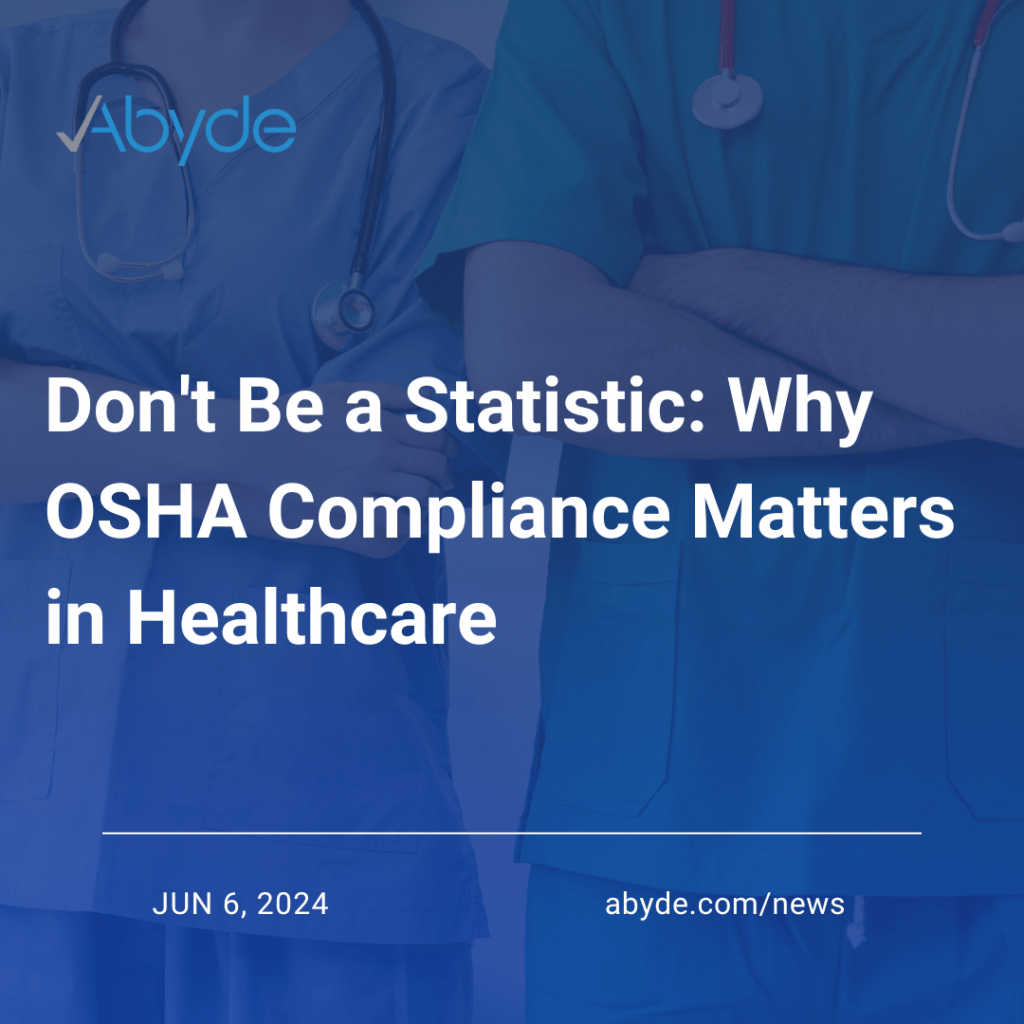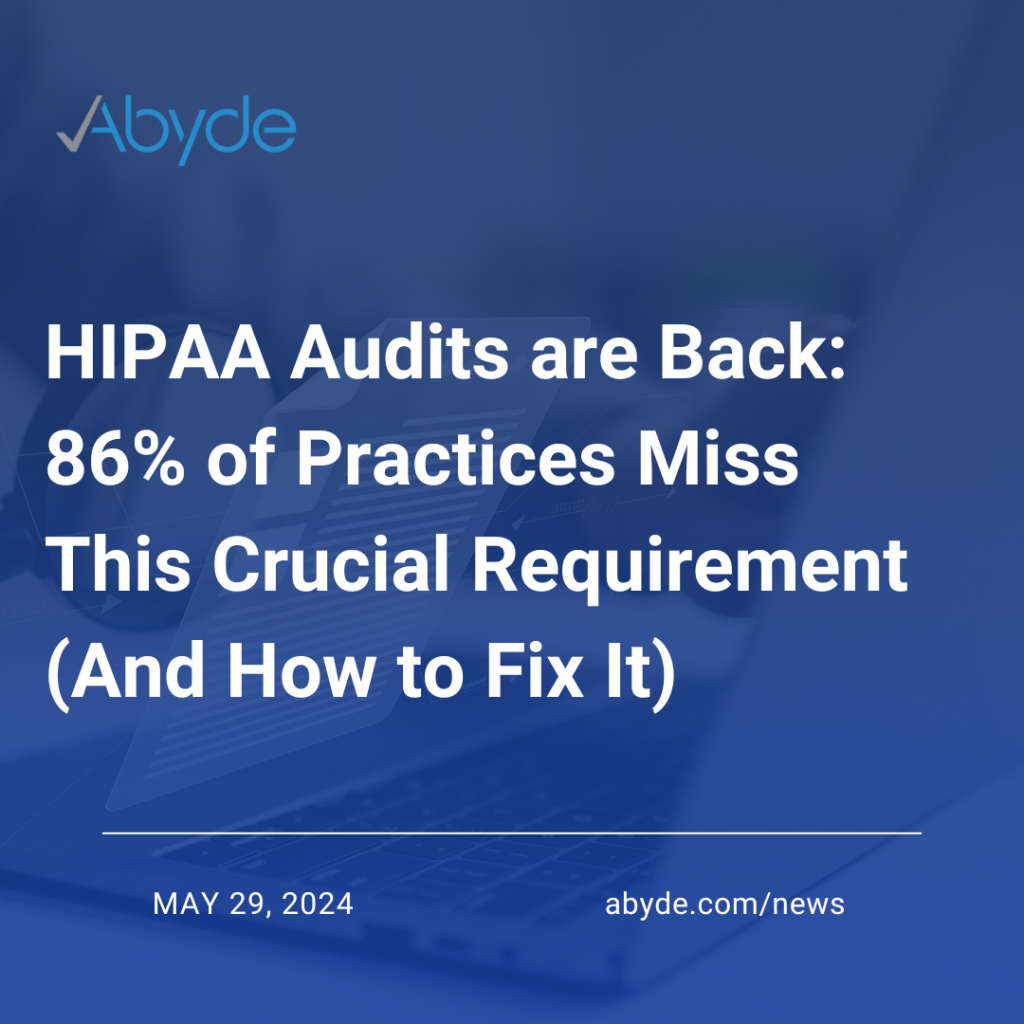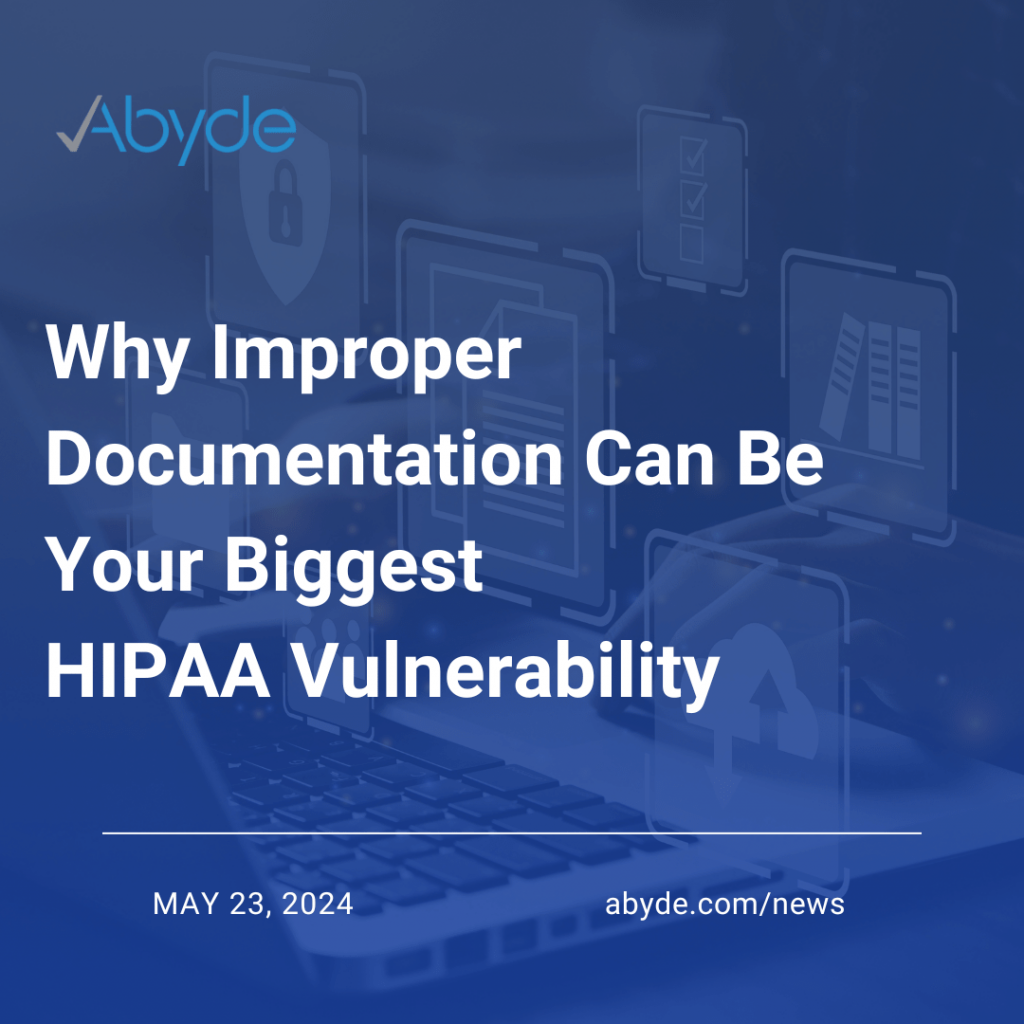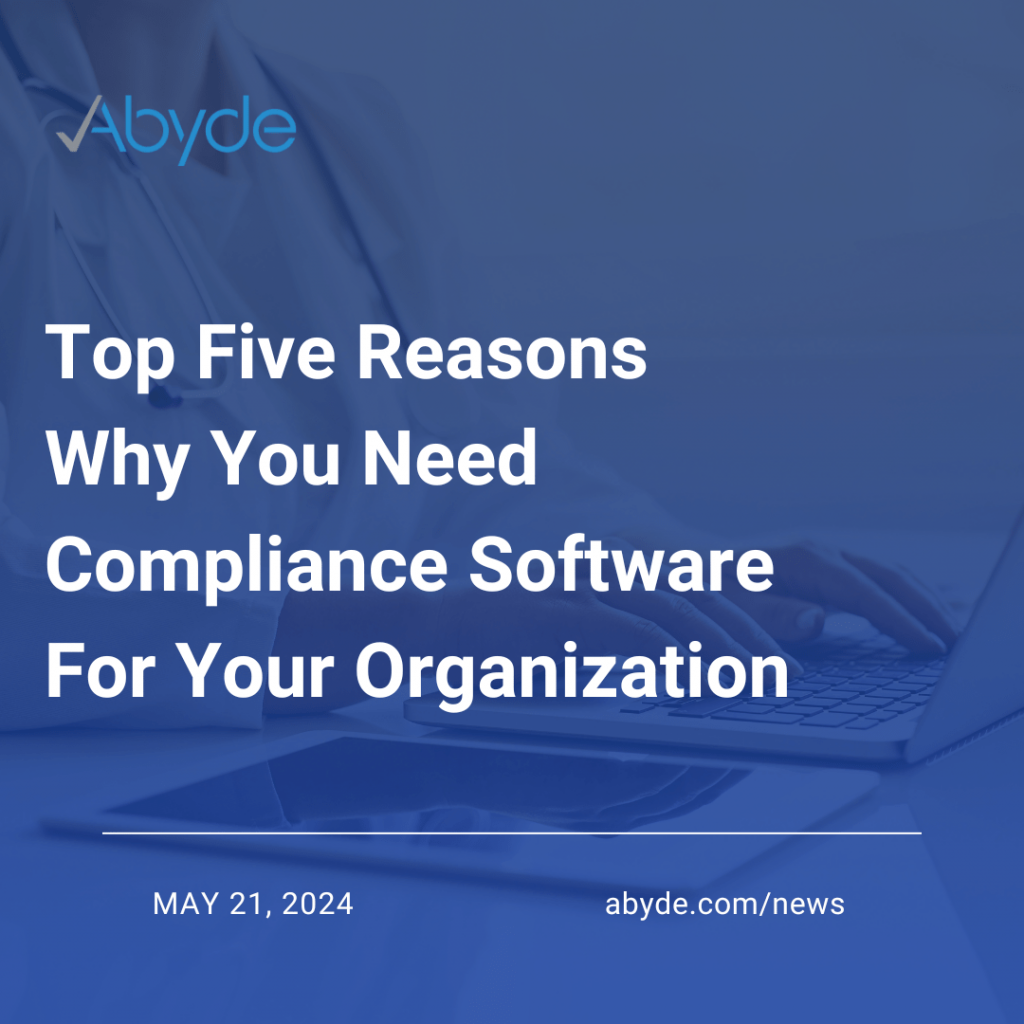July 25, 2024 Running a small medical practice is a juggling act. Staff wear many hats, and HIPAA compliance often gets squeezed in amongst other tasks. Did you know that physicians spend an average of 10 to 19 hours per week on administrative duties such as HIPAA tasks? HIPAA legislation outlines how Covered Entities and Business Associates must handle and secure patient PHI (Protected Health Information). Specifically, a HIPAA Compliance Officer (HCO) must be designated to ensure compliance maintenance. This is a significant yet essential role, and one that staff in a busy, small office have little time to attend to. Here’s the good news: There are better ways to manage HIPAA compliance efficiently if you’re the HCO. Let’s explore the key duties of an HCO and how you can handle the numerous obligations that come with the role. What is an HCO? The HCO must ensure the practice follows HIPAA requirements and sufficiently follows all physical, administrative, and technical safeguards to protect sensitive patient data. Being an HCO is a significant role and crucial for patient data security. Many HCOs wear multiple hats within an organization, such as serving as the office manager or a doctor. This can sometimes feel overwhelming, but it’s important to remember that HIPAA compliance is a shared commitment. Just like a conductor leads an orchestra, the HCO sets the tone. However, like every musician, from the violinist to the triangle player, needs to play their part flawlessly, everyone in the organization must follow HIPAA rules to create a harmony of patient privacy. What is an HCO Responsible for? The HCO role oversees everything related to a HIPAA program. This includes managing documentation, training, reviewing updated legislation, conducting the Security Risk Analysis, and much more. As the HCO, you must ensure proper compliance with HIPAA regulations within your practice and serve as the primary resource for your staff regarding HIPAA concerns. You also need to uphold patient access rights and ensure patients receive their medical records promptly. In case of a HIPAA violation or breach, the HCO will investigate and report the situation to the Office for Civil Rights (OCR) accordingly. The HCO acts as the main point of contact for the OCR and serves as the liaison if further investigation is required. Sounds like a lot of work, right? The Cure for HCO Stress By now, you know the role of an HCO is complex and can be time-consuming, especially when the individual manages numerous roles in a practice. The time spent on HIPAA tasks reduces the time available for patient care and other tasks. Inaccurate documentation due to human error can also lead to non-compliance with federal standards, adding stress and complexity to an HCO’s role. Many HCOs have their trusty HIPAA binder bursting with disorganized documentation. While this physical documentation might be an easy band-aid for an organization, as HIPAA continues to evolve, your binder should too. We can all agree there are much more enjoyable activities than handling HIPAA documentation. That’s where smart software solutions can streamline compliance for a practice. Instead of taking hours each week, this process can be reduced to minutes with intelligent software that can identify vulnerabilities and provide insights for improvement. That sounds a lot better, right? To learn more about how to streamline your compliance program, saving time and cost and providing peace of mind for the HCO, schedule an educational consultation today with an Abyde expert.
A Nearly Million Dollar Mistake: Heritage Valley Health System
July 3, 2024 Did you know that ransomware attacks are becoming increasingly common in healthcare? Since 2018, there has been a whopping 264% increase in large ransomware breaches. The devastating impact of a ransomware breach on an organization is wide-reaching, regardless of its size, as seen with the Change Healthcare breach. It’s imperative to take the proper precautions to ensure that Protected Health Information (PHI) is secure against hacking attempts. At the center of the latest fine, Heritage Valley Health System (HVHS), which operates in Pennsylvania, Ohio, and West Virginia, fell victim to ransomware attacks. These attacks infected HVHS systems, affecting sensitive patient information. As the Office for Civil Rights (OCR) reviewed the major data breach, several pieces of required documentation, such as a Security Risk Analysis (SRA) and an emergency plan, were absent. This missing documentation has led to a $950,000 fine and three years of corrective monitoring. Let’s explore what you can do to prevent this nearly million-dollar mistake. Importance of an SRA The purpose of the SRA is to review your risks and vulnerabilities regarding the management of ePHI (electronic Protected Health Information). This comprehensive analysis notes the physical, technical, and administrative controls to protect your patient’s PHI. Your SRA is documented proof that your organization understands its weaknesses and is making strides to address them and better protect patient data. While the SRA is a very important document, it is frequently missed. From the last round of random HIPAA audits, which have resumed recently, only 83% of practices and Business Associates could produce a sufficient SRA. SRAs are vital for practice compliance, showcasing growth, and best practices in safeguarding patient data. Check out our recent blog post here to learn more about the SRA. Why do I need plans in place? When running a medical practice, it’s important to be prepared for any situation that could arise. That’s why policies and procedures are so important. If your practice faces a scenario that may compromise PHI, your team needs easy access to a plan for handling the situation calmly. By addressing potential challenges well in advance, your team will feel empowered and confident in their ability to respond. Moreover, as part of your preventive measures, it’s beneficial to designate specific roles and responsibilities for your staff. This ensures that everyone is aware of their duties in any given situation. Cybersecurity Measures Unfortunately, healthcare practices have become very common victims of ransomware attacks. To prepare your organization for this, follow best cybersecurity practices, such as encryption, reviewing access controls, and creating unique sign-ons for all employees. Healthcare organizations should prioritize technical safeguards like encryption, access controls, and multi-factor authentication. However, security goes beyond technology. Implement security awareness training for staff, establish a data breach response plan, and maintain regular backups. Regularly conduct risk assessments and evaluate the security practices of third-party vendors. It’s important to consider partnering with an IT company offering valuable expertise. They can recommend the right tools, update you on evolving threats, and monitor your systems for suspicious activity. This layered approach will strengthen your systems and prepare you for potential attacks. How Smart Software Can Help Fines for HIPAA non-compliance can be staggering, but there are alternatives to the manual tracking and paper binders you may be used to. Intelligent software systems are designed to save you time and headaches and ultimately protect your practice to avoid audits and fines. Software empowers your team to manage your program easily and enables a culture of compliance in the office. It streamlines commonly overlooked requirements such as the SRA with dynamically created documentation and develops comprehensive plans, policies, and procedures so you stay current with the latest requirements. Better yet, when using cloud-based software solutions, you get 24/7 secure access and real-time updates when compliance regulations change. Schedule an educational consultation today to learn more about how software solutions can protect your practice.
Transforming Healthcare Safety: Managing Workplace Violence Prevention Requirements with Smart Solutions
June 27, 2024 Workplace violence, unfortunately, is a highly prevalent experience in healthcare. Shockingly, healthcare workers are five times more likely to experience workplace violence than any other industry. Despite the challenges, healthcare workers assume an essential role, and it’s crucial for staff to feel secure and supported in their environment. Legislation at the state level ensures that all staff, regardless of industry, receive proper training and care for workplace violence. For example, California has passed a workplace violence bill, SB 553, which will take effect on July 1st. This bill will significantly impact workplaces by mandating expanded documentation, training, and other measures related to workplace violence. While this is still at the state level, several states are enacting legislation around workplace violence. While California’s SB 553 is the first to be enacted, Texas is quickly following suit, with a similar law going into effect in September. As more states pass similar laws, they’re likely to become federal legislation, meaning regardless of state, it’s important to stay informed about new requirements. What is SB 553? SB 553, California’s workplace violence bill, is one of the newest pieces of legislation drafted by CalOSHA. This bill introduces new requirements, such as an expanded injury log for specific workplace violence injuries, thorough training, and a workplace violence prevention plan (WVPP). These new elements will ensure staff is properly educated on this topic and that a process is in place if a situation arises. Similar to HIPAA documentation, this documentation must be customized to fit your specific practice or business. Using templates won’t suffice. In the event of a workplace violence incident, your team must understand the process for handling the situation and identify the risks and vulnerabilities that could most affect them. This involves outlining designated roles and responsibilities. This detailed plan is known as a Workplace Violence Prevention Plan or WVPP and is a new requirement in all workplaces in California (and more states soon to follow). This bill provides a detailed process for preventing workplace violence. If your practice already follows CalOSHA’s requirements for workplace violence in healthcare, you are exempt from this new law for the general industry. It includes requirements for thorough training, a workplace violence protection plan, and mandatory incident reporting. Just as sharps injuries must be reported separately, workplace violence incidents must also be reported separately. How Managing OSHA for Healthcare with Smart Solutions Can Help As new laws are enacted, old documentation and processes can quickly become obsolete. The compliance landscape constantly changes, so staying informed is crucial to safeguard your practice. Intelligent, cloud-based software solutions like Abyde receive frequent updates, providing your practice with the latest information necessary to keep it secure and compliant with new laws. Dynamic software also rapidly updates your policies, procedures, logs, and more, continuously updating your documentation with the latest developments. Download Abyde’s Workplace Violence Prevention checklist today to see where your OSHA program currently stands to protect your business.
HIPAA for Dental Practices: Avoid the Most Common Fines
June 26, 2024 Did you know that as of 2023, less than half of dental offices in the United States are fully HIPAA compliant? Dentists play a crucial role in maintaining oral health and ensuring the safety of their patients’ Protected Health Information (PHI). Although HIPAA regulations can be complex, it’s essential to understand and comply with them to protect your dental practice and patients. This article explores the most common HIPAA fines for dentists and how you can manage them. Right of Access Under HIPAA, patients can access their medical records within 30 days of the first request and should not be charged unreasonable costs. Dentists have been fined several times for violating this right. A practice in Georgia took over a year to provide a patient with her medical records after she refused to pay a $170 copying fee. This incident violated the 30-day timeline, and the fee was also deemed unreasonable, resulting in a fine of $80,000. To uphold a patient’s right to access their medical records, it’s vital to manage record requests promptly and organize them. It’s also essential to avoid charging excessive fees for accessing these records. If you’re unsure about what would be considered a reasonable fee, the OCR has issued guidance suggesting a flat fee of a maximum of $6.50 for accessing records. Social Media Usage On top of managing your practice’s reputation in person, you have to manage it online. Online reviews are a shared resource patients use while selecting a new dentist. 94% of patients use online reviews while choosing a new medical provider. However, while managing your online presence, you must be HIPAA compliant. This means not sharing any of your patient’s PHI in reviews. A dental practice in North Carolina was fined $50,000 for improperly sharing a patient’s PHI online in response to a negative review. The practice shared significant PHI about the patient, which discredited the original review. No matter how inaccurate or false a review may be, sharing a patient’s PHI online is never justifiable. Keeping responses short and sweet is essential to avoid making a social media mistake. Even if someone has shared information in their review, you can’t mention that they are a patient at your practice. It’s essential to use a brief and general response while navigating HIPAA. If you receive a negative review, it’s crucial to stay calm. Getting upset for a few seconds isn’t worth facing thousands of dollars in fines. Next, take the conversation to a private channel. Respond to the comment with HIPAA-compliant communication, such as providing a phone number or encrypted email to further discuss the patient’s experience. Cybersecurity Access In our technology-driven world, most, if not all, dental practices utilize technology to create and store patient data. In recent years, cybersecurity concerns and hacks have infiltrated the healthcare system, with hacking causing 77% of large breaches. Controlling and training staff on technology use is vital for protecting your practice. In a rare case, a HIPAA violation resulted in jail time for an employee at a dental practice. This employee, a receptionist, abused her access to PHI, stealing patients’ identities and making significant purchases with them. She was sentenced to two to six years in prison for her crime. Encrypt and secure information properly to avoid cybersecurity-related fines. Additionally, assign roles and access to employees individually, with every employee having their own login. Periodically review employee access and activity to ensure technology is being used correctly. How Software Can Help There’s a better way to simplify the compliance process for your dental practice. Software offers the ability to streamline your administrative tasks, saving you time and letting you focus on taking care of your patients. Automated and dynamic software helps you be proactive in avoiding these common mistakes, pinpointing your vulnerabilities, and resolving them effectively. Schedule a consultation here to learn more about how Abyde’s intelligent solutions can help create a culture of compliance and protect your practice.
Drowning in Paperwork? 70% of Healthcare Workers Are Too. Here’s the Fix.
June 13, 2024 Did you know that more than 70% of healthcare workers spend over 10 hours a week on paperwork? When working in healthcare, the last thing you might expect is to spend most of your time on paperwork, but it’s a reality for many. Paperwork might seem monotonous and time-consuming, but it’s a crucial requirement for HIPAA. Your compliance program must be documented to prove you’re protecting your patients. Why can’t I use templates? It’s essential to avoid cutting corners with compliance paperwork. Personalized documentation is key, so using templates isn’t compliant. Templates are generic, whereas documentation represents the specific policies and procedures for your location that must be followed to protect your patients’ PHI (Protected Health Information). Many policies and procedures are required to ensure staff safety and PHI. Some examples include the Disaster Recovery Plan, the Breach Notification Policy, and the Electronic Data Disposal Policy. They must be personalized for your practice, such as including local emergency phone numbers in the Disaster Recovery Plan or defining specific roles and responsibilities in policies. Additionally, if responsibilities change, policies and procedures must be updated, ensuring the latest info is documented. By drafting personalized documentation, your practice ensures its staff knows their responsibilities regarding protecting PHI and the procedures that must be followed. What else is required documentation? Drafting documentation is the first step, but organizing the content is just as important. Policies and procedures should be easily accessible so staff can review them effortlessly. In any situation, your team should be able to access the plan quickly, stay calm, and review the documentation. The documentation should also be clear and understandable for the staff. Staff should have easy access to policies and procedures, which should be reviewed during onboarding to provide new employees with the necessary resources. How Software Solutions Can Help In the past, documentation was often seen as an overwhelming, overflowing binder, but that doesn’t have to be the case. As technology advances, your compliance program needs to keep up as well. Nowadays, healthcare workers can use software solutions to create personalized documentation quickly. Software solutions can help eliminate the possibility of human error and utilize cutting-edge technology to dynamically generate policies that meet the latest requirements in the healthcare industry. Almost all healthcare employees spend numerous hours every week on paperwork. So why not significantly reduce the time spent on these activities and achieve compliance in minutes? Software rapidly creates personalized documentation, including staff names and responsibilities, and provides organizational structure. Instead of disorganized physical binders, you can have an intuitive solution with policies and procedures hosted in the cloud that are easily accessible with an internet connection. To learn more about how Abyde can save your practice countless hours on documentation, schedule a software demo.
Don’t Be a Statistic: Why OSHA Compliance Matters in Healthcare
June 6, 2024 Did you know that the healthcare industry has some of the highest rates of illness and injury despite being a place for healing? OSHA, or the Occupational Safety and Health Administration, is the governing body that protects workers’ rights throughout all industries. Given the healthcare industry’s risks and hazards, such as exposure to bloodborne pathogens, sharps, chemicals, and more, healthcare workers’ rights under OSHA are particularly crucial. OSHA enforces the protection of healthcare workers’ rights through legislature, audits, and fines that every practice needs to know about. Why is OSHA Important in Healthcare? OSHA is vital in reducing risks and illnesses in the healthcare industry. Since its introduction, OSHA has led to a significant drop in workplace fatalities and diseases, with the average number of cases decreasing from 10.9 per 100 in 1972 to 2.7 in 2022 – a 75% decrease. Reducing workplace incidents empowers and protects healthcare workers. This confidence and protection translate to a culture of compliance, where better working conditions elevate patient care and, ultimately, create a healthier environment for everyone. What does it mean to be OSHA Compliant? Ensuring worker safety in healthcare requires ongoing attention. OSHA compliance must be proactive, involving the implementation of appropriate safeguards and regular, role-specific training. Practices need to provide training that covers workers’ roles and responsibilities so that they have the tools and knowledge necessary to stay safe at work. A Facility Risk Assessment (FRA), or analysis of a practice’s vulnerabilities, is required as part of a proactive OSHA compliance program. An FRA enables practices to address issues proactively before they escalate into unsafe workplace situations. OSHA compliance also involves providing workplace safety equipment, such as Personal Protective Equipment (PPE) like gloves, masks, and other healthcare gear. To maintain a safe workplace, it is important to have easily accessible and transparent policies and procedures for all employees. This provides clear guidance to the staff on how to handle specific situations. For instance, Safety Data Sheets provide details on proper precautions and the properties of substances when handling chemicals, which are essential for ensuring a safe workplace. Reporting these incidents and ensuring they are appropriately followed up is crucial when issues occur at work. Employees should also feel comfortable and safe discussing potential violations without fearing repercussions. How Cloud-based Software Solutions Can Help Managing OSHA can be complex for a practice, but utilizing a software solution can streamline the process. These intelligent solutions can dynamically manage OSHA requirements, like policies and procedures, ensuring clear documentation is easily accessible and always up to date, which minimizes risk to the business. Beyond streamlining workflows, compliance software is a centralized resource. From the FRA to user-friendly training modules, a comprehensive software suite empowers employees to stay safe and informed on the job. To learn more about how Abyde can assist your practice in developing a culture of OSHA compliance, schedule an educational consultation.
Change Healthcare Breach: What You Need to Do
May 31, 2024 Since February, the Change Healthcare ransomware attack has dominated headlines in the medical industry, cited as likely the most significant breach ever in the U.S. health system. To quickly recap, a group of malicious hackers infiltrated Change Healthcare’s systems in February. The hackers had access to the system for nine days before infecting systems with ransomware on the 21st. When it was realized Change Healthcare’s systems were compromised, its systems were immediately disconnected to mitigate risks. This attack not only jeopardized patients’ Protected Health Information (PHI) but also caused detrimental impact on the healthcare industry at large. Change Healthcare processes 15 billion healthcare transactions annually. With these systems down, healthcare providers continue to struggle with basic processes, like filling prescriptions and getting paid through insurance claims. The latest update on the Change Healthcare breach has reached Capitol Hill. Andrew Witty, CEO of UnitedHealth Group, the parent company of Change Healthcare, testified at two congressional hearings on May 1st. At these hearings, the cause of the breach was acknowledged: a lack of multi-factor authentication prompts when logging into internal systems. Additionally, while Witty confirmed that the exact scope of impacted patients is unknown, it is expected to be very severe. One-third of Americans could be affected by this cyberattack. Although Change Healthcare’s lack of security protocols caused the catastrophic breach, it is still your practice’s responsibility to notify impacted patients. What You Need to Do The Office for Civil Rights (OCR) is still investigating the magnitude of this cyberattack, but guidance has been released. First, Change Healthcare is notifying stakeholders impacted by the breach. This includes Covered Entities and Business Associates. Business Associates must notify Covered Entities if their business is affected, and the responsibility to inform patients ultimately falls on Covered Entities. The Breach Notification Rule under HIPAA details what information needs to be shared with patients, including suspected dates the data was breached, what PHI was involved, and the next steps. Once it’s known that this breach impacted your patients, it’s vital to notify affected individuals without unreasonable delay and to inform the HHS. The media must also be notified if five hundred or more patients were affected. After this significant cyber attack, reviewing your risks and vulnerabilities is crucial. If a vast organization processing up to $2 trillion in medical claims annually can be hacked, so can your practice. Ensure standard security protocols, like multi-factor authentication, are in place to mitigate the risk of breaches. When it comes to your HIPAA compliance programs, securing your data is critical. For example, Abyde’s cloud-based software features an intuitive Security Risk Analysis (SRA) and ongoing compliance review to quickly identify and address risks to keep your practice’s sensitive data safe. As this breach is still under investigation, Abyde will keep Covered Entities and Business Associates up-to-date on the latest developments. Visit the HHS FAQ page on the Change Healthcare breach here. To learn more about software solutions to ensure protected compliance for your practice, schedule an educational consultation here with a compliance expert.
HIPAA Audits are Back: 86% of Practices Miss This Crucial Requirement (And How to Fix It)
May 29, 2024 The random HIPAA audits are officially back. Melanie Fontes Rainer, Director of the Office for Civil Rights (OCR), confirmed in a recent interview that the OCR is proactively conducting audits as part of a series of improvements. Following a five-year hiatus from proactive audits, the Office for Civil Rights (OCR) has been updating key HIPAA regulations. For instance, the OCR is also releasing an updated Security Rule by the end of the year to better reflect innovation since its original publication over twenty years ago. As the OCR continues to advance HIPAA rules, it’s vital to be prepared with a foundation of a compliant practice. At the base of this foundation is the Security Risk Analysis (SRA), a commonly missing HIPAA requirement. During the last round of proactive audits, 86% of Covered Entities could not show a properly documented SRA for their practice. What is a Security Risk Analysis (SRA)? The OCR defines an SRA as “an accurate and thorough assessment of potential risks and vulnerabilities to confidentiality, integrity, and availability of electronic Protected Health Information (ePHI).” The SRA is focused on protecting ePHI. It is a continuous requirement and needs to be updated when significant changes occur to your practice. It’s best practice to complete the SRA at least annually. An SRA is a complete evaluation of how PHI is protected. Questions include encryption practices, staff training, disposal of PHI, and more. Why is the SRA Important? The SRA documents proof that a practice has appropriate safeguards to protect sensitive patient data. It requires practices to conduct self-audits and identify risks and vulnerabilities before they become issues. This means anticipating vulnerabilities and implementing preventative measures before sensitive data is compromised. If followed correctly, the SRA acts as a vital line of defense, helping prevent data breaches, ensuring patient privacy, and building trust within the healthcare system. How do I complete an SRA? Completing an SRA is crucial for protecting sensitive patient data. The good news is that several approaches are available, each with varying costs and timelines. Before starting an SRA, it is essential to have an HCO, or HIPAA Compliance Officer, in place to manage HIPAA documentation and the SRA process. You can complete the SRA internally using online resources provided by the OCR. While there are free resources, this option is less intuitive than others, can be time-intensive, and requires significant team effort. Manual audits can take weeks to months to complete. You could also hire an external auditor or consultant to complete your SRA. Hiring a consultant might reduce the burden on your team but can be costly. The average price of an external auditor is in the thousands, with some costing upwards of $20,000. Additionally, these external audits can take months. An alternative option is intelligent compliance software, which provides significant benefits for meeting the SRA requirement and more. It allows you and your practice to navigate the SRA cost-effectively and efficiently. While a manual audit usually takes weeks to months, an audit assisted by software can be completed in significantly less time, simplifying the SRA process, and saving your practice substantial costs and assuring protection. Why Should I Use Compliance Software? As the Security Rule is updated, your compliance program also deserves an upgrade. Intelligent software solutions can help you easily fulfill complex HIPAA requirements, prepare for potential risks and vulnerabilities, and protect patient data. Many organizations overlook the SRA, but software solutions can streamline the process and protect your practice. To learn more about Abyde’s innovative software solutions, schedule an educational consultation.
Why Improper Documentation Can Be Your Biggest HIPAA Vulnerability
May 23, 2024 Secure documentation is essential in any industry. However, in healthcare, there’s even more on the line. Ensuring HIPAA compliance with proper patient data care is crucial. Let’s explore how it works. Required Documentation for HIPAA HIPAA requires Covered Entities (CEs) and Business Associates (BAs) to document how they manage Protected Health Information (PHI). Your organization needs to document its compliance process to be HIPAA compliant. This process includes your initial Security Risk Analysis, identifying risks and vulnerabilities, completing training, and any partnerships your organization might have with BAs. Under the Breach Notification Rule, any breach must be documented and reported, and affected patients must be notified. Written proof is required that your organization takes appropriate measures to protect patient data, especially when dealing with PHI. Additionally, your practice’s policies and procedures must be easily accessible and personalized for your location. Personalized documentation of policies, like a Disaster Recovery Plan, details the best course of action for your employees and their roles if a situation arises. What Happens if Documentation isn’t in Place? When documentation isn’t in place, it can lead to fines. Proper documentation is crucial for HIPAA compliance. HIPAA mandates personalized documentation of your practice’s compliance program, which identifies your practice and shows that appropriate measures are in place to secure PHI. The Business Associate Agreement (BAA) is a legally binding contract required for Covered Entities to establish with their Business Associates. The BAA outlines each party’s responsibilities for securing PHI. This documentation is vital for ensuring compliance with HIPAA regulations and identifying duties in the relationship. Many organizations have faced fines for neglecting this essential documentation. For instance, the Center for Children’s Digestive Health was fined $31,000 for lacking a BAA. While thorough documentation practices are essential, many practices using manual methods often fall short, leading to HIPAA violations. At the latest HIPAA Summit, the OCR stated that some of the most common recurring HIPAA violations include incorrect documentation, especially missing BAAs. It’s a simple task to ensure accountability, but it’s necessary. How Intelligent Software Solutions Can Help Documentation is essential but can be overwhelming. Compliance software simplifies the process, saving countless hours and protecting your practice. Innovative cloud-based solutions enable you to auto-generate and manage your policies and procedures quickly. You can create your documentation dynamically in seconds, ensuring your practice has the most up-to-date documentation. BAAs, a commonly overlooked document, can also be managed within software. Drafting the agreement and sending the documentation through the software simplifies the process. To learn more about how Abyde can streamline and simplify your HIPAA compliance, please schedule an educational consultation.
Top Five Reasons Why You Need Compliance Software For Your Organization
May 21, 2024 As a healthcare provider, staying updated on evolving regulations is crucial to protecting your practice, its reputation, and its patients. But complying with regulations can be daunting; even the most diligent teams face challenges. In light of the recent Change Healthcare Breach, it’s more important than ever for practices of all sizes to reevaluate their compliance approach. This is where automated compliance software provides an excellent solution to streamline, simplify, and secure the process. This blog post explores the benefits of intelligent software compliance programs for protecting your practice in place of manual compliance efforts and how software can help you succeed. Top Five Reasons Why You Need Compliance Software 1: Automate Tasks & Reduce Manual Work An average manual HIPAA audit can take anywhere from several hours to several months to complete. When patient care is the focus, this is wasted time. Intelligent, user-friendly software assists practices in understanding the process and managing their time efficiently. With algorithms running the program, employees can dedicate more time to patient care, optimize workflow, efficiently schedule appointments, and reduce wait times. 2: Avoid Fines with Compliance Software The average cost of a HIPAA fine in 2023 was $321,269. In comparison, investing in software is much less expensive than a potential fine, saving practices hundreds of thousands of dollars with preventative measures. Ensuring ongoing compliance is the key. Software simplifies necessary processes to ensure compliance, potentially reducing common infractions that result in fines and penalties. 3: Effectively Manage Risk HIPAA is highly detailed and demanding, requiring practices to maintain meticulously documented and ongoing compliance programs. With centralized documentation, integrated Security Risk Analysis (SRA), and automated ongoing risk monitoring, risk can be mitigated. Software can dynamically generate policies and reporting, streamlining cumbersome processes. With thorough reporting, organizations can make informed decisions and proactively identify gaps. Stronger risk management protects practices against threats to their reputation, finances, and operations. 4: Develop a Thorough Understanding of Compliance Understanding the regulations is essential for maintaining HIPAA compliance. Access to comprehensive training and up-to-date resources to ensure compliance is another advantage of software solutions. Regular training establishes a foundation for your organization to foster a culture of compliance. Software companies also provide dedicated support teams to assist your practice with questions. 5: Stay Ahead of Regulations The Office for Civil Rights is always improving and updating HIPAA rules to keep up with the latest technology and practices. Melanie Fontes Rainer, the director of the OCR, recently discussed the HIPAA Security Rule, stating that HIPAA is technology-neutral and scalable, but it doesn’t reflect how we receive healthcare today. This is particularly important considering the OCR has recently issued new HIPAA and online tracking guidelines. As technology advances, so does regulation. Changes in regulations are challenging to keep up with. Alternatively, software is regularly updated to align with compliance changes, simplifying reviews of the evolving healthcare landscape. You can minimize risk and stay compliant by receiving the latest HIPAA updates from your software provider. How Abyde can help Manually managing HIPAA compliance can be risky and error-prone, leaving your practice exposed. Instead, you can easily navigate requirements and safeguard your practice while saving significant hours and costs. All while promoting a culture of compliance through staff education on regulations and requirements, it’s all possible with software by Abyde. To learn more about ensuring your practice is compliant, email info@abyde.com and schedule an educational consultation.
